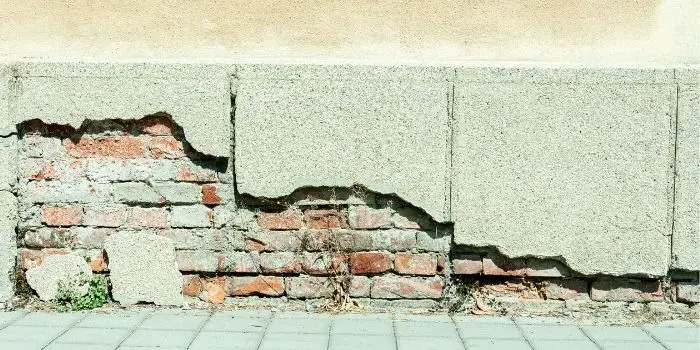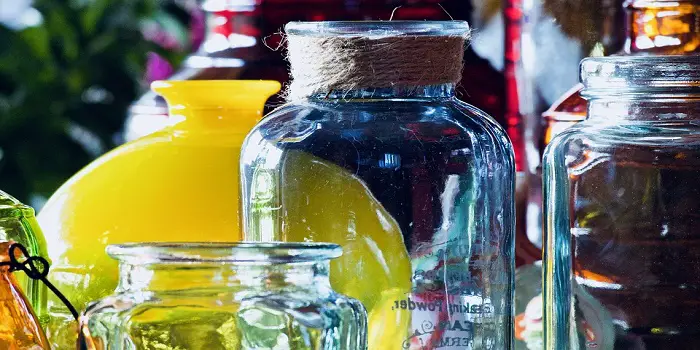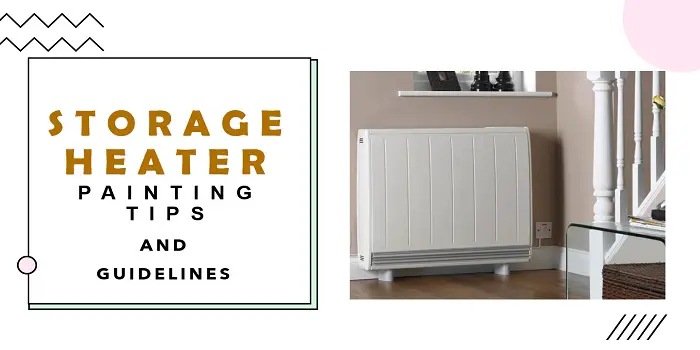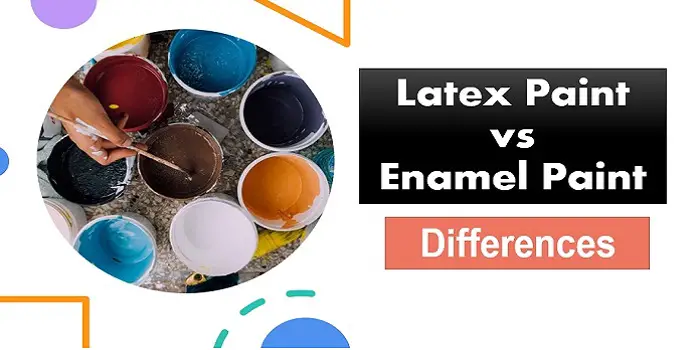
Concrete, even though strong and durable, can be damaged by sunlight, and over time, it can cause block foundation walls to wear down. The result can be small holes or cracks forming or the mortar crumbling.
If you’re wondering whether you can paint over your house foundation to fix issues like these, the answer is yes it’s possible because many paint products in the modern age are being designed to waterproof masonry foundations and will cover concrete easily for as long as a decade with no peeling.
Plus, the good thing is you can find paint colors outside of the usual white or gray that can help make your house look appealing.
What's Here in the Article:
Types of Paint for House Foundation
When it comes to selecting the right type of paint to use on a house foundation, there are many options you can choose from.
Below, we’ll look at a few of them, so you can get a better understanding of which one is best for your home.
1- Elastomeric Paint
Elastomeric paint, also referred to as masonry paint, is an excellent option for painting foundations. This type of waterproof choice can fill tiny pores in the concrete and often comes with a lifetime guarantee.
Elastomeric acrylic paint is my favored paint pick no matter whether you need to cover concrete or brick foundations. As the name might imply, elastomeric acrylic masonry paint only means that the finish is somewhat elastic.
This paint is capable of expanding 500 percent higher, keeping the seal over the concrete. Because it expands and contracts with the surface, this paint is particularly effective on concrete.
It is also designed to cover vertical surfaces that sit above a certain grade (above-grade foundations) since it will allow more moisture to escape and is quite breathable.
You should avoid using exterior house paint on foundations, as it lacks the necessary binders found in elastomeric paint and can crack and peel when applied to concrete.
2- Concrete Stain
This is a stain instead of a paint and is either acid- or water-based. You should particularly pick a semi-transparent concrete stain that’s available in various colors but will show more of the surface texture than others, offering a rougher appearance that many homeowners prefer.
Acid-based stains are permanent and last longer, so be sure you put some thought into the color before choosing it. These also require a sprayer, plenty of pressure washing, and a sealant for concrete.
Water-based stains are simpler to apply but won’t last as long as acid-based stains. These also come with more color options, making them the preferred choice for many people.
3- Acrylic Waterproof Paint
Unlike the above elastomeric acrylic masonry paint, this is a non-elastic version made to be used for below- and above-grade applications.
The ability to waterproof the foundation is more efficient and effective than its elastomeric counterpart since it offers a significant seal with no moisture coming in or going out. However, this type often only has a ten-year guarantee, meaning you’ll need to eventually repaint it.
4- Latex Paints for Foundation
This type of masonry paint also comes in many colors and is often less expensive than acrylic paints. The main difference between these two categories is that latex doesn’t waterproof anything the way acrylic does.
One of the benefits of latex, besides its lower price point, is that it doesn’t need a primer, and its application is straightforward; instead of a sprayer, you can use a standard roller brush.
You will often see guarantees on latex that are between 20 and 25 years old, though it won’t offer the same kind of protection as acrylic masonry paint does for your foundations.

Pros and Cons of Painting Foundations
The most common type of foundation is concrete, including concrete blocks.
It is visible below the siding and above the ground, and many homeowners decide to leave it as it comes because it will provide the most aesthetically pleasing finish.
Fortunately, it is easy to paint concrete foundations with many options for the paint to choose from. If you are considering that option, here are a few advantages and disadvantages of painting foundations…
Pros
- Seals up small holes or cracks
- Protects masonry against moisture and UV damage
- Elevates the aesthetic value of the house
Cons
- Your foundation paint won’t match if you change your siding
- Paint for this job is not cheap and can cost up to $155 for a five-gallon bucket
- Painting alone is not a good substitute for waterproofing your foundation
Despite the name, a brick foundation is also actually concrete. It just means that the homeowner opted to cover the foundation using brick at some point.
Brick can be trickier to paint since it is more porous than concrete, meaning the surface will usually have more penetrations or cracks.
Furthermore, the surface of a brick foundation has more undulations which can make painting harder. Even so, brick can be painted and can change the entire look of the home. If you use a primer before painting, it will save you a lot of time and effort.
Steps to Prepare and Paint House Foundation
Properly preparing the foundation before painting is essential. Begin by clearing any debris around the concrete or brick foundation, such as piled-up leaves, to create a clean workspace.
Next, thoroughly clean the concrete foundation, as a dirty surface prevents the paint from adhering correctly, leading to potential cracking and peeling. You can use a pressure washer or a garden hose to clean the surface, opting for a low setting on the pressure washer to avoid damaging the foundation.
For stubborn stains or old paint, trisodium phosphate (TSP) can be effective. Mix ½ cup of TSP per gallon of water, then use a bristle brush to scrub away the debris.
If mildew is present, prepare a bleach solution with one part bleach to three parts water. Allow the solution to soak for 30 minutes then scrub with a bristle brush. Avoid using acid-cleaning products on bricks, as they can hinder paint adhesion.
After cleaning, inspect the foundation for cracks and dents, and repair any you find with a flexible sealant like acrylic caulk. Once repairs are complete, ensure the foundation is fully dry before beginning to paint.
Do I need to prime the house foundation before painting?
If you have a self-priming product, you won’t have to prime the surface before painting. For any other types, priming is a good idea. If you choose not to, then the warranty of your paint will usually be void, and your finished result will be poorer.
Most acrylic paints aren’t self-priming, but latex products are, which may influence your decision to buy one over the other.
Can You Paint Over House Foundation Coatings?
Chances are high that your foundation is already covered with something. This could be the mortar that is often applied over poured foundation walls or a concrete block, also known as parging. It could also be a coating of tar that waterproofs the foundation.
Whichever one you have to work with, it’s important to know that not every cover for a foundation wall is supposed to be painted.
Tar
Tar is one of the most common coatings for foundations, especially in older homes. It has been used for decades as it offers a weathertight layer between the foundation walls and the earth.
If you have tar, you can’t paint over it. You can only remove it. The process is a long one, but it’s all you can do if you want to paint over this foundation.
To do so, you’ll need hydrochloric acid diluted with water. After this, use a heavy-duty scrub brush and attach it to a cordless drill to scrub the foundation with the acid. With that done, use an electric scraper to remove it. Finally, wash it all off with water.
Parging
This is a smooth coating of mostly decorative mortar that is put over block concrete or poured foundation walls. It offers a uniform appearance and hides any imperfections on the wall like cracks.
Because parging is mostly cosmetic, it doesn’t offer any weatherproofing. Because of this, it can trap in some moisture after it rains and may even take on water stains after it has rained hard and then dried by the sun.
You must use care when painting over parging. Because moisture can build up in it, painting using waterproof paint can keep moisture trapped in the parging, which could cause swifter deterioration. Conversely, not using waterproof paint could cause the foundation to leak.
If you weren’t having any problems with water seeping into the wall of the foundation before you painted, then wait until the weather is dry and paint the parging.
What Color to Paint the Concrete Foundation of Your Home?
Your neighborhood HOA might influence the color you choose for your foundation. Some HOAs mandate uniformity and require foundations to be a specific color. If your HOA doesn’t have such requirements, you still might find your color options limited.
Unfortunately, the market for foundation paints is not very large, resulting in fewer mass-produced color choices. Also, many siding manufacturers don’t offer colors that match their foundation paints, so you may need to mix and match, making the process a trickier one.
Instead of attempting to match the exact color of the two paints, pick an accent color. Choosing a neutral color such as gray or a shade of brown that matches the earth’s color near the foundation is a good idea.
Final Thoughts
Water is not the only enemy of house foundations. UV light is a big threat as well. Painting your exterior foundation will not only protect the surface but can also enhance the curb appeal of your home.
The type of product you use is arguably more important than the color itself and should be treated as such. Some of these products, like a stain and masonry finish, won’t come off easily after it is applied. So, choose the product wisely and prepare the surface appropriately before you start to paint.
Share the post "What Type of Paint to Use On the House Foundation?"

Douglas Becker (aka Painter Doug) has over twenty years of experience as a painter in Adkins, Texas. At present, he resides in Florida with his family.
From painting multi-storeyed houses, condos, and apartments to large commercial buildings and small offices, he had served various customers in areas not only in Adkins but also in Southwest Florida, Sarasota, Naples, and many more. To know more about him check here.




